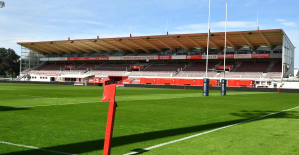Between ten , and twelve thousand angry activists from around the country marched Tuesday night in torchlight procession against the government's ulvepolitikk. They took over the city centre in Oslo and marked the powerful that there are alternative political wills in this country. The commemoration took place at the same time as the four bourgeois parties are sitting together at Hadeland and try to create a new government. In the middle of the fakkeltoget the country in a poll (Norstat for NRK and Aftenposten) that shows a solid rødgrønt majority, that the centre party is now as large as the conservative party and that the Left and the Progress is below the threshold. Now snapping the wolf also for Erna & Co.
According to Rovdata is registered between 67 and 74 wolves in Norway, but the real number is probably higher. In relation to this rather modest figure has wolf an extraordinary political importance, and conflicting role. For many people - especially outside of the larger towns - is the wolf something far more than a predator that is threatening the animals to pasture, and that supplies of the valuable popular. It has become a symbol of an ancient Norwegian conflict that has received a new life: the Conflict between centre and fringe. This conflict is woven together with a growing resistance to anything that tastes of the elite.
Under the fakkeltoget bar many of the demonstrators orange skyggeluer. It is probably an attempt to establish a symbol on the line with the yellow vestene in France.
the Demonstration, on Tuesday night came not rekende on a spline. The great level of support shows in itself that the requirements of strict bestandsmål for the wolf has significant public support. At the same time, there is reason to note that one of the organizers (Naturbruksalliansen) is a federation of strong business interests. Behind stands twelve organizations, bl.a. farmer - and skogeierorganisasjonene, reindeer herding, and representatives of hunters and fishermen. Here is everything from the filthy rich forest owners to geitebønder. At the same time has over 200 mayors requirements a more local rovdyrforvaltning.
implies that the protest hardly will wither from exhaustion, as many politicians probably like. Nevertheless will not this means dropping the case, but exploit it to the last trevl. It promised the party leader Trygve Slagsvold in a speech to the protestors. The pain of the other parties is already significant. There is evidence to outright rebellion both in the Right and the Progress party. The left and the party's minister of the environment Olav Elvestuen, are under severe pressure and has lost credibility as a champion for the environment and nature. His shaking out probably most of the inner frost, but is also depending on support in rural areas if it is to survive.
It is talk about a strong political cocktail, but it contains more ingredients than rovdyrmotstand. The supporters of a rovdyrvennlig politics is less well organized than the resistance, but has significant support in the people. A study undertaken by the Norwegian Institute for nature research last spring indicates that the wolf has many defenders. A key finding in the survey was that 57 percent of those surveyed said they like or like well that there is wolf in Norway, compared to 24 percent who dislike or dislike it strongly. When the issue becomes more concrete and binding, we see a dichotomy of people. When the questions place the wolf in the nature close to people, it's about as big groups like answer “would like” (37 percent) who “dislike” (38 per cent). Also among those who live close to the wolf, there is a considerable group that accepts the situation.
strong polarization also comes up in the trust of politicians and scientists. Among those who dislike that there are wolves in Norway, it is only 2.6 per cent who say they have great confidence in the researchers, while 83.5 per cent of the ulvetilhengerne have such confidence.
This is more than numbers and populist skepticism to evidence based policy. Since the 80's, there has been a fundamental shift in views on how we use and understand the nature. Departure from the agricultural and industrial community also meant a shift in the assessment of how we deal with Norway's resources. Throughout this country's history is about to exploit and magnify the natural resources, whether it is fishing, farming, hunting, fossekraft or oil. So grow it forward an alternative view which looks at nature as something more than a factor of production. It is experienced as a resource and value in and of themselves, preferably without major changes. These two natursynene comes naturally to completely opposite conclusions when it comes to wolves in Norway.
Simultaneously hardly any majority in this country who supports the extremes in the debate. Total frislipp or full slaughter of all of the predators are not commonly used options. Again is the most important value: The difficult tradeoff that pain all the parties, but also to live with.
the Wolf stands strong in the Norwegian people Leader
 United States: divided on the question of presidential immunity, the Supreme Court offers respite to Trump
United States: divided on the question of presidential immunity, the Supreme Court offers respite to Trump Maurizio Molinari: “the Scurati affair, a European injury”
Maurizio Molinari: “the Scurati affair, a European injury” Hamas-Israel war: US begins construction of pier in Gaza
Hamas-Israel war: US begins construction of pier in Gaza Israel prepares to attack Rafah
Israel prepares to attack Rafah Spain is the country in the European Union with the most overqualified workers for their jobs
Spain is the country in the European Union with the most overqualified workers for their jobs Parvovirus alert, the “fifth disease” of children which has already caused the death of five babies in 2024
Parvovirus alert, the “fifth disease” of children which has already caused the death of five babies in 2024 Colorectal cancer: what to watch out for in those under 50
Colorectal cancer: what to watch out for in those under 50 H5N1 virus: traces detected in pasteurized milk in the United States
H5N1 virus: traces detected in pasteurized milk in the United States Private clinics announce a strike with “total suspension” of their activities, including emergencies, from June 3 to 5
Private clinics announce a strike with “total suspension” of their activities, including emergencies, from June 3 to 5 The Lagardère group wants to accentuate “synergies” with Vivendi, its new owner
The Lagardère group wants to accentuate “synergies” with Vivendi, its new owner The iconic tennis video game “Top Spin” returns after 13 years of absence
The iconic tennis video game “Top Spin” returns after 13 years of absence Three Stellantis automobile factories shut down due to supplier strike
Three Stellantis automobile factories shut down due to supplier strike A pre-Roman necropolis discovered in Italy during archaeological excavations
A pre-Roman necropolis discovered in Italy during archaeological excavations Searches in Guadeloupe for an investigation into the memorial dedicated to the history of slavery
Searches in Guadeloupe for an investigation into the memorial dedicated to the history of slavery Aya Nakamura in Olympic form a few hours before the Flames ceremony
Aya Nakamura in Olympic form a few hours before the Flames ceremony Psychiatrist Raphaël Gaillard elected to the French Academy
Psychiatrist Raphaël Gaillard elected to the French Academy Skoda Kodiaq 2024: a 'beast' plug-in hybrid SUV
Skoda Kodiaq 2024: a 'beast' plug-in hybrid SUV Tesla launches a new Model Y with 600 km of autonomy at a "more accessible price"
Tesla launches a new Model Y with 600 km of autonomy at a "more accessible price" The 10 best-selling cars in March 2024 in Spain: sales fall due to Easter
The 10 best-selling cars in March 2024 in Spain: sales fall due to Easter A private jet company buys more than 100 flying cars
A private jet company buys more than 100 flying cars This is how housing prices have changed in Spain in the last decade
This is how housing prices have changed in Spain in the last decade The home mortgage firm drops 10% in January and interest soars to 3.46%
The home mortgage firm drops 10% in January and interest soars to 3.46% The jewel of the Rocío de Nagüeles urbanization: a dream villa in Marbella
The jewel of the Rocío de Nagüeles urbanization: a dream villa in Marbella Rental prices grow by 7.3% in February: where does it go up and where does it go down?
Rental prices grow by 7.3% in February: where does it go up and where does it go down? Even on a mission for NATO, the Charles-de-Gaulle remains under French control, Lecornu responds to Mélenchon
Even on a mission for NATO, the Charles-de-Gaulle remains under French control, Lecornu responds to Mélenchon “Deadly Europe”, “economic decline”, immigration… What to remember from Emmanuel Macron’s speech at the Sorbonne
“Deadly Europe”, “economic decline”, immigration… What to remember from Emmanuel Macron’s speech at the Sorbonne Sale of Biogaran: The Republicans write to Emmanuel Macron
Sale of Biogaran: The Republicans write to Emmanuel Macron Europeans: “All those who claim that we don’t need Europe are liars”, criticizes Bayrou
Europeans: “All those who claim that we don’t need Europe are liars”, criticizes Bayrou These French cities that will boycott the World Cup in Qatar
These French cities that will boycott the World Cup in Qatar Archery: everything you need to know about the sport
Archery: everything you need to know about the sport Handball: “We collapsed”, regrets Nikola Karabatic after PSG-Barcelona
Handball: “We collapsed”, regrets Nikola Karabatic after PSG-Barcelona Tennis: smash, drop shot, slide... Nadal's best points for his return to Madrid (video)
Tennis: smash, drop shot, slide... Nadal's best points for his return to Madrid (video) Pro D2: Biarritz wins a significant success in Agen and takes another step towards maintaining
Pro D2: Biarritz wins a significant success in Agen and takes another step towards maintaining


















